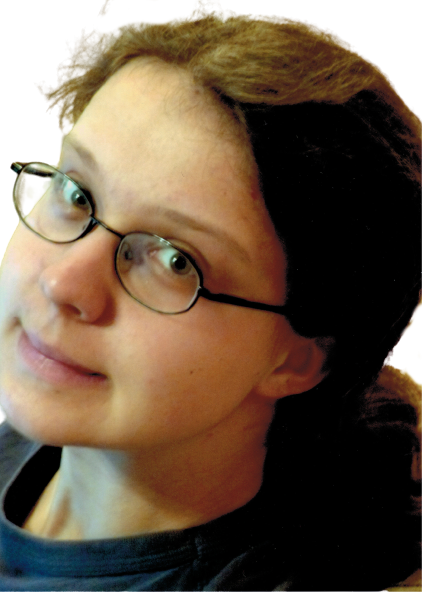 Dr. Anna Musiał is an assistant professor in the
Laboratory for Optical Spectroscopy of Nanostructures
at
Wrocław University of Science and Technology
(WrUT, Poland) and a PI of the project. She got a PhD
degree in Physics in 2013 for thesis entitled Optical properties of elongated nanostructures in III-V semiconductors
prepared under supervision of prof. Misiewicz (WrUT) and prof. Forchel (University of Würzburg, Germany). After that she
worked as a postdoc in group of prof. Reitzenstein -
Optoelectronic
and Quantum Devices
at Technical University of Berlin (2014-2017) where she realized Polish MNiSW-funded project
High-Quality
Deterministic Single Quantum Dot-Based Light Sources for Quantum Communication Technology
within a Mobility Plus programme. Her research interests include: optical properties
and electronic structure of semiconductor nanostructures emitting at telecom wavelengths and their applications in optoelectronics and non-classical light sources,
engineering of polarisation properties of emission from epitaxial nanostructures of various geometries, localisation and decoherence effects in epitaxial quantum
dots, light-matter coupling and quantum electrodynamics effects, micro- and nanolasers. She has been a PI of 2 research projects (FNP, MNiSW) and participated in realization of 7 others (including 3 international, 2 German national research projects
funded by DFG and one R&D project). She co-authored over 40 research articles (e.g.,
Physical Review B,
Applied Physics Letter, Optics Express,
Advanced Quantum Technologies,
New Journal of Physics
) which were cited almost 400 times resulting in h-index of 13
(source: Google Scholar). She presented the results of her research on over
40
international conferences
including 4 invited talks. Since 2012 she is a member of
Polish Physical
Society
and since 2015 also German Physical Society.
Dr. Anna Musiał is an assistant professor in the
Laboratory for Optical Spectroscopy of Nanostructures
at
Wrocław University of Science and Technology
(WrUT, Poland) and a PI of the project. She got a PhD
degree in Physics in 2013 for thesis entitled Optical properties of elongated nanostructures in III-V semiconductors
prepared under supervision of prof. Misiewicz (WrUT) and prof. Forchel (University of Würzburg, Germany). After that she
worked as a postdoc in group of prof. Reitzenstein -
Optoelectronic
and Quantum Devices
at Technical University of Berlin (2014-2017) where she realized Polish MNiSW-funded project
High-Quality
Deterministic Single Quantum Dot-Based Light Sources for Quantum Communication Technology
within a Mobility Plus programme. Her research interests include: optical properties
and electronic structure of semiconductor nanostructures emitting at telecom wavelengths and their applications in optoelectronics and non-classical light sources,
engineering of polarisation properties of emission from epitaxial nanostructures of various geometries, localisation and decoherence effects in epitaxial quantum
dots, light-matter coupling and quantum electrodynamics effects, micro- and nanolasers. She has been a PI of 2 research projects (FNP, MNiSW) and participated in realization of 7 others (including 3 international, 2 German national research projects
funded by DFG and one R&D project). She co-authored over 40 research articles (e.g.,
Physical Review B,
Applied Physics Letter, Optics Express,
Advanced Quantum Technologies,
New Journal of Physics
) which were cited almost 400 times resulting in h-index of 13
(source: Google Scholar). She presented the results of her research on over
40
international conferences
including 4 invited talks. Since 2012 she is a member of
Polish Physical
Society
and since 2015 also German Physical Society.
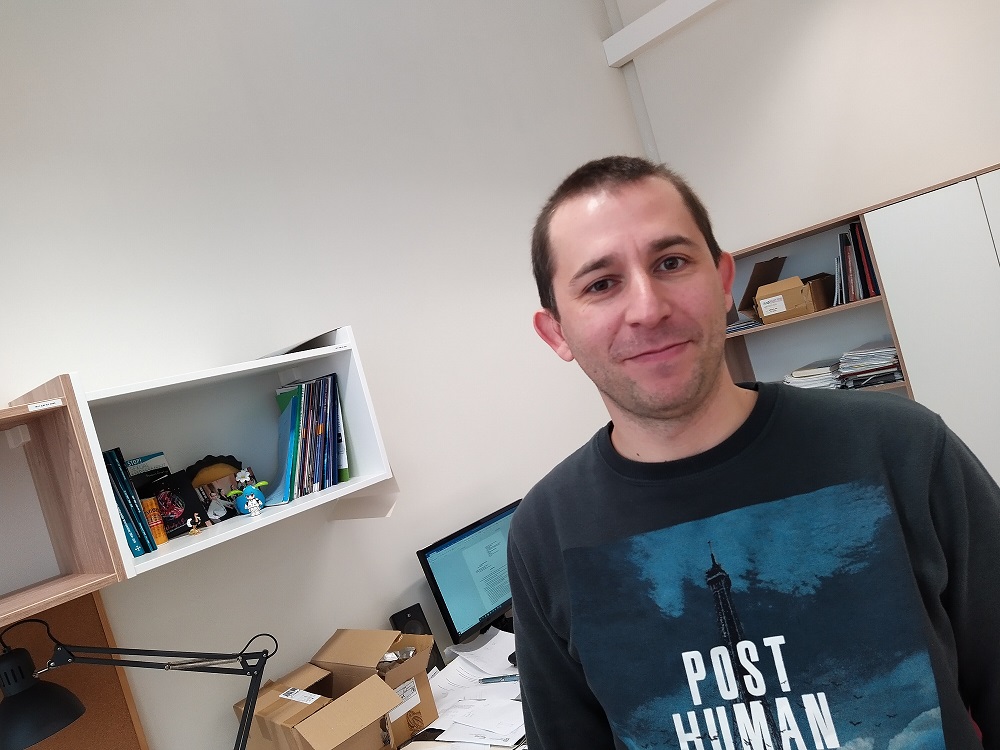 Dr. Wojciech Rudno-Rudziński works as an assistant professor in the Laboratory for Optical Spectroscopy of Nanostructures
at Wroclaw University of Science and Technology (Poland). He has defended his PhD thesis
Optical spectroscopy of low dimensional semiconductor structures.
Measurement techniques with high spatial resolution
in 2006. In 2006/2007 he had a post-doc position in Institut National des Sciences Appliquées de Lyon,
where he worked on French National Agency project ATTHENA. His international training includes also shorter visits to University of Strasbourg and Eindhoven University of Technology.
He was involved in several national and international research projects. His scientific interests concern application of various optical spectroscopy techniques to
low dimensional
semiconductor structures,
recently mostly to single quantum dots emitting in the telecom spectral range, also in external magnetic field. In the spare time he
enjoys reading.
Dr. Wojciech Rudno-Rudziński works as an assistant professor in the Laboratory for Optical Spectroscopy of Nanostructures
at Wroclaw University of Science and Technology (Poland). He has defended his PhD thesis
Optical spectroscopy of low dimensional semiconductor structures.
Measurement techniques with high spatial resolution
in 2006. In 2006/2007 he had a post-doc position in Institut National des Sciences Appliquées de Lyon,
where he worked on French National Agency project ATTHENA. His international training includes also shorter visits to University of Strasbourg and Eindhoven University of Technology.
He was involved in several national and international research projects. His scientific interests concern application of various optical spectroscopy techniques to
low dimensional
semiconductor structures,
recently mostly to single quantum dots emitting in the telecom spectral range, also in external magnetic field. In the spare time he
enjoys reading.
His tasks in the project include:
- measurements of microphotoluminescence in external magnetic field on single quantum dots grown on GaAs and InP substrates and emitting in the telecom spectral range,
- providing expertise related to advanced experimental equipment (microcryostat with superconducting magnetic coil),
- supervision of students performing experiments, analysis and interpretation of the results.
 Dr. Oleh Kravets finished Master program with a specialization of semiconductor and insulator physics in Ivan Franko National University of Lviv (Ukraine)
where defended PhD thesis “Luminescence of magnesium and zinc gallate spinels doped with manganese and europium ions” in 2019. In 2019/2020 moved to Wrocław
University of Science and Technology on post-doc position on the HOMING project. Since joining the project in WUST extensively grown skills in correlation spectroscopy of single quantum dots
and actively participated in scientific events of the research group. Beyond scientific activity, he is fascinated with photography art and reading.
Dr. Oleh Kravets finished Master program with a specialization of semiconductor and insulator physics in Ivan Franko National University of Lviv (Ukraine)
where defended PhD thesis “Luminescence of magnesium and zinc gallate spinels doped with manganese and europium ions” in 2019. In 2019/2020 moved to Wrocław
University of Science and Technology on post-doc position on the HOMING project. Since joining the project in WUST extensively grown skills in correlation spectroscopy of single quantum dots
and actively participated in scientific events of the research group. Beyond scientific activity, he is fascinated with photography art and reading.
His tasks in the project include:
- optical characterization of single-photon sources and quantum entanglement of GaAs-based and InP-based quantum dots emitting at 1.3 and 1.55 μm by means of autocorrelation and crosscorrelation spectroscopy, respectively;
- evaluation of indistinguishability of single photons of quantum dots by measurements of Hong-Ou-Mandel Interference.
 Monika Mikulicz is a PhD student at Department of Experimental Physics at Wrocław University of Science and Technology (Poland)and finished Master program in
Technical Physics with specialization: Nanoengineering at the Faculty of Fundamental Problems of Technology, Wrocław University of Science and Technology. Title of her master thesis was
Statistics of photon emission from epitaxial quantum dots emitting in telecommunication spectral range. She actively participates in the research work of the
Laboratory for Optical Spectroscopy of Nanostructures at Wroclaw University of Science and Technology from 2016. She is co-author of publication “Method for direct coupling of
a semiconductor quantum dot to an optical fiber for single-photon source applications” (Optics Express 27, 26772, 2019). She presented results of her research on
4 international conferences including oral presentation on The International Conference on Nonlinear Optics and Excitation Kinetics in Semiconductors (NOEKS). Her hobbies are: indie movies
and futuristic books.
Monika Mikulicz is a PhD student at Department of Experimental Physics at Wrocław University of Science and Technology (Poland)and finished Master program in
Technical Physics with specialization: Nanoengineering at the Faculty of Fundamental Problems of Technology, Wrocław University of Science and Technology. Title of her master thesis was
Statistics of photon emission from epitaxial quantum dots emitting in telecommunication spectral range. She actively participates in the research work of the
Laboratory for Optical Spectroscopy of Nanostructures at Wroclaw University of Science and Technology from 2016. She is co-author of publication “Method for direct coupling of
a semiconductor quantum dot to an optical fiber for single-photon source applications” (Optics Express 27, 26772, 2019). She presented results of her research on
4 international conferences including oral presentation on The International Conference on Nonlinear Optics and Excitation Kinetics in Semiconductors (NOEKS). Her hobbies are: indie movies
and futuristic books.
Her task in the project are:
- optical pre-characterization of InP-based quantum dots emitting at 1.55 μm by means of temperature- and power-dependent as well as polarization-resolved microphotoluminescence
- identification of excitonic complexes and their fundamental optical properties, in particular biexciton-exciton cascade and fine structure splitting of the neutral exciton
- extraction efficiency of emission from symmetric InP-based single quantum dots emitting in the telecom C-band design and construction of Mach-Zehnder interferometer for tailoring the time separation between the excitation pulses for two-photon interference experiment
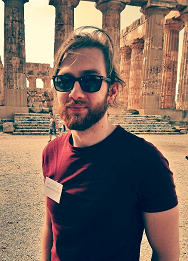 Marek Burakowski is a PhD student at Department of Experimental Physics Wrocław University of Science and Technology and finished Master program in Technical Physics
with specialization: Nanoengineering at the Faculty of Fundamental Problems of Technology, Wrocław University of Science and Technology (Poland). During his studies,
he had the opportunity to study the influence of the magnetic field on nanostructures (quantum dots and rings) with research results presented at many foreign conferences and in the form of a master thesis entitled
"Optical excitonic Aharonov-Bohm effect in GaSb / GaAs quantum rings". His non-scientific interest is playing chess, which he enjoys from the earliest years.
Marek Burakowski is a PhD student at Department of Experimental Physics Wrocław University of Science and Technology and finished Master program in Technical Physics
with specialization: Nanoengineering at the Faculty of Fundamental Problems of Technology, Wrocław University of Science and Technology (Poland). During his studies,
he had the opportunity to study the influence of the magnetic field on nanostructures (quantum dots and rings) with research results presented at many foreign conferences and in the form of a master thesis entitled
"Optical excitonic Aharonov-Bohm effect in GaSb / GaAs quantum rings". His non-scientific interest is playing chess, which he enjoys from the earliest years.
His task in the project include:
- magnetooptics of single semiconductor quantum dots in two material systems: GaAs-based and InP-based,
- identification of excitonic complexes including dark excitonic states and determination of their basic magnetooptical properties.
 Jakub Jasiński is a PhD student at Department of Experimental Physics Wrocław University of Science and Technology and finished Master program in Technical Physics with specialization: Nanoengineering at the Faculty of Fundamental Problems of Technology, Wrocław University of Science and Technology (Poland). His master thesis concerned “Generation of single photons and carrier dynamics in epitaxial quantum dots emitting at telecom wavelengths” extraction efficiency of emission from solid-state emitters was his research topic during bachelor studies. He took part and presented his research results on international scientific conferences such as: PHoBiA annual Nanophotonics International Conference (2019, Wrocław, Poland), 2nd International Symposium on "Single Photon based Quantum Technologies" (2019, Berlin, Germany) and 1st DPG Fall Meeting “Quantum Science and Information Technologies” (2019, Freiburg, Germany). He has always been fascinated by nature and mechanisms of how the universe works. Studying physics became his choice as it is the most fundamental of all sciences that attempts to answer basic questions about reality which we live in. The process of scientific method, besides being the single best method used to find truth about the world, yields an amazing byproduct in the form of technology, which utility to the modern civilization is indescribable.
Jakub Jasiński is a PhD student at Department of Experimental Physics Wrocław University of Science and Technology and finished Master program in Technical Physics with specialization: Nanoengineering at the Faculty of Fundamental Problems of Technology, Wrocław University of Science and Technology (Poland). His master thesis concerned “Generation of single photons and carrier dynamics in epitaxial quantum dots emitting at telecom wavelengths” extraction efficiency of emission from solid-state emitters was his research topic during bachelor studies. He took part and presented his research results on international scientific conferences such as: PHoBiA annual Nanophotonics International Conference (2019, Wrocław, Poland), 2nd International Symposium on "Single Photon based Quantum Technologies" (2019, Berlin, Germany) and 1st DPG Fall Meeting “Quantum Science and Information Technologies” (2019, Freiburg, Germany). He has always been fascinated by nature and mechanisms of how the universe works. Studying physics became his choice as it is the most fundamental of all sciences that attempts to answer basic questions about reality which we live in. The process of scientific method, besides being the single best method used to find truth about the world, yields an amazing byproduct in the form of technology, which utility to the modern civilization is indescribable.
His tasks in the project are:
- measurements of microphotoluminescence of GaAs-based quantum dots emitting at 1.3 μm including temperature- and power-dependent as well as polarization-resolved study,
- measurements of extraction efficiency of emission from GaAs-based quantum dots emitting at 1.3 μm in (non)deterministic mesa photonic structures,
- identification of excitonic complexes and their fundamental optical properties, in particular biexciton-exciton cascade and fine structure splitting of the neutral exciton.
 Hanna Salamon finished her Bachelor studies of Technical Physics with specialization in Nanoengineering at Wroclaw University of Science and Technology (Poland).
Her bachelor thesis entitled "Optical properties of InAs quantum dots for on-chip integrated photonics" focused on optical properties of InAs quantum dots in the photonic integrated circuits. Currently she is doing a MSc in Nanoscience at University of Copenhagen (Denmark).
Her scientific interests include physics of light-matter coupling, quantum communication and quantum information technologies.
Hanna Salamon finished her Bachelor studies of Technical Physics with specialization in Nanoengineering at Wroclaw University of Science and Technology (Poland).
Her bachelor thesis entitled "Optical properties of InAs quantum dots for on-chip integrated photonics" focused on optical properties of InAs quantum dots in the photonic integrated circuits. Currently she is doing a MSc in Nanoscience at University of Copenhagen (Denmark).
Her scientific interests include physics of light-matter coupling, quantum communication and quantum information technologies.
In project she was working on:
- identification of higher states in quantum dots emitting within telecommunication range grown on GaAs substrate (O-band) and InP-based symmetric quantum dots (C-band) by means of (micro)photoluminescence excitation spectroscopy method.
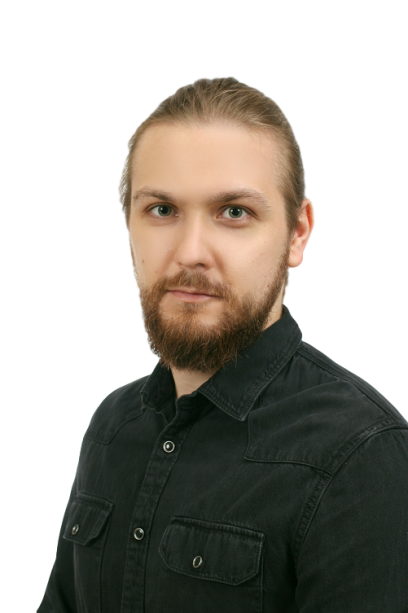 Tristan Smołka is a PhD student at Department of Experimental Physics Wrocław University of Science and Technology
and finished Master program in Technical Physics with specialization: Nanoengineering at the Faculty of Fundamental Problems of Technology,
Wrocław University of Science and Technology (Poland). His master thesis topic was about GaSbBi specification with time-resolved infrared spectroscopy using single
photon counting method and his thesis was entitled "Carrier dynamics investigations of GaSbBi layers". He actively participates in the research work of the Laboratory for Optical Spectroscopy of Nanostructures at Wroclaw University of Science and Technology,
mostly by measurements in mid- and far infrared spectral region using time resolved spectroscopy and fourier-transform infrared spectroscopy.
Tristan Smołka is a PhD student at Department of Experimental Physics Wrocław University of Science and Technology
and finished Master program in Technical Physics with specialization: Nanoengineering at the Faculty of Fundamental Problems of Technology,
Wrocław University of Science and Technology (Poland). His master thesis topic was about GaSbBi specification with time-resolved infrared spectroscopy using single
photon counting method and his thesis was entitled "Carrier dynamics investigations of GaSbBi layers". He actively participates in the research work of the Laboratory for Optical Spectroscopy of Nanostructures at Wroclaw University of Science and Technology,
mostly by measurements in mid- and far infrared spectral region using time resolved spectroscopy and fourier-transform infrared spectroscopy.
His tasks in the project include:
- optical measurement of InP-based quantum dots emitting at 1.55 μm using time resolved microphotoluminescence,
- identification of fundamental optical properties and specific photoluminescence lines of planar and non-planar InP QD samples
 Michał Rygała is a PhD student at Wrocław University of Science and Technology. He obtained his Master degree in
Technical Physics
with specialization in Nanoengineering at the Faculty of Fundamental Problems of Technology at
Wrocław University
of Science and Technology.
His master thesis was entitled "Optical properties of tunnelling diodes utilizing a GaInAsSb alloy as an absorption layer". His main scientific interests lie in mid- and far- infrared spectroscopy of semiconductor devices, utilizing various emission
and absorption techniques. Moreover, he is a melomaniac, a bookworm and a major nerd.
Michał Rygała is a PhD student at Wrocław University of Science and Technology. He obtained his Master degree in
Technical Physics
with specialization in Nanoengineering at the Faculty of Fundamental Problems of Technology at
Wrocław University
of Science and Technology.
His master thesis was entitled "Optical properties of tunnelling diodes utilizing a GaInAsSb alloy as an absorption layer". His main scientific interests lie in mid- and far- infrared spectroscopy of semiconductor devices, utilizing various emission
and absorption techniques. Moreover, he is a melomaniac, a bookworm and a major nerd.
During his time as a project member he employed his knowledge to realize the following tasks:
- microphotoluminescence measurements of symmetric InAs/InP quantum dots optimised for emission in a telecom C-band
- time-resolved microphotoluminescence measurements of the single emission lines pre-identified by means of mPL study in order to compare the determined PL decay times measured on the planar sample with the results from a patterned sample (with mesas) of the same material.
 Katarzyna Posmyk is a master’s student at Wrocław University of Science and Technology and finished her Bachelor
program in Technical Physics with specialization: Nanoengineering at the Faculty of Fundamental Problems of Technology, Wrocław University of Science and Technology (Poland). Currently she is pursuing her master's thesis entitled "Recombination dynamics in two-dimensional perovskites".
Katarzyna Posmyk is a master’s student at Wrocław University of Science and Technology and finished her Bachelor
program in Technical Physics with specialization: Nanoengineering at the Faculty of Fundamental Problems of Technology, Wrocław University of Science and Technology (Poland). Currently she is pursuing her master's thesis entitled "Recombination dynamics in two-dimensional perovskites".
Her tasks in the project were:
- power-dependent measurements of microphotoluminescence and photoluminescence decays of InP-based quantum dots emitting at 1.55 μm
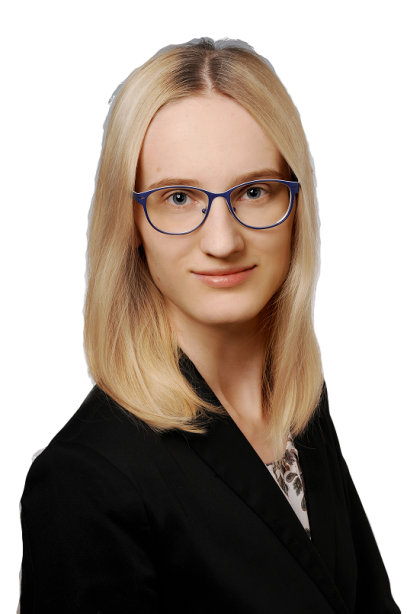 Agata Zielińska finished her Bachelor studies of Technical Physics with specialization in Nanoengineering at Wroclaw University of Science and Technology (Poland).
Currently she continues her education at the same field of study to obtain a MSc degree and is working on thesis entitled "Optical properties of epitaxial quantum dots emitting in the telecommunication spectral range".
Her main scientific intrerests lie in spectroscopy of epitaxial quantum dots and single photon sources.
In the free time she enjoys painting and reading books.
Agata Zielińska finished her Bachelor studies of Technical Physics with specialization in Nanoengineering at Wroclaw University of Science and Technology (Poland).
Currently she continues her education at the same field of study to obtain a MSc degree and is working on thesis entitled "Optical properties of epitaxial quantum dots emitting in the telecommunication spectral range".
Her main scientific intrerests lie in spectroscopy of epitaxial quantum dots and single photon sources.
In the free time she enjoys painting and reading books.
Her tasks in the project are:
- power-dependent and polarization-resolved study of structures with quantum dots on GaAs and InP substrates by means of (micro)photoluminescence method.
- identification of excitonic complexes and best candidates for advanced optical characterization.